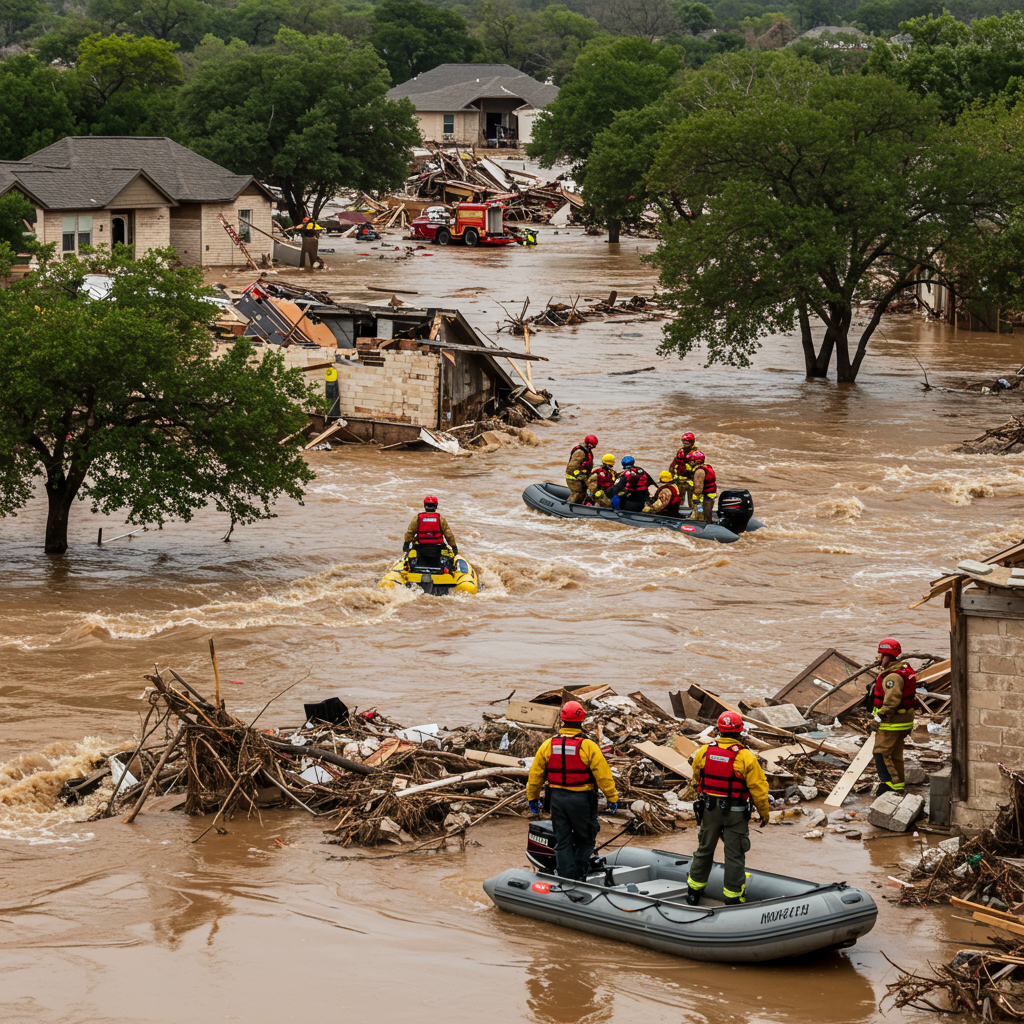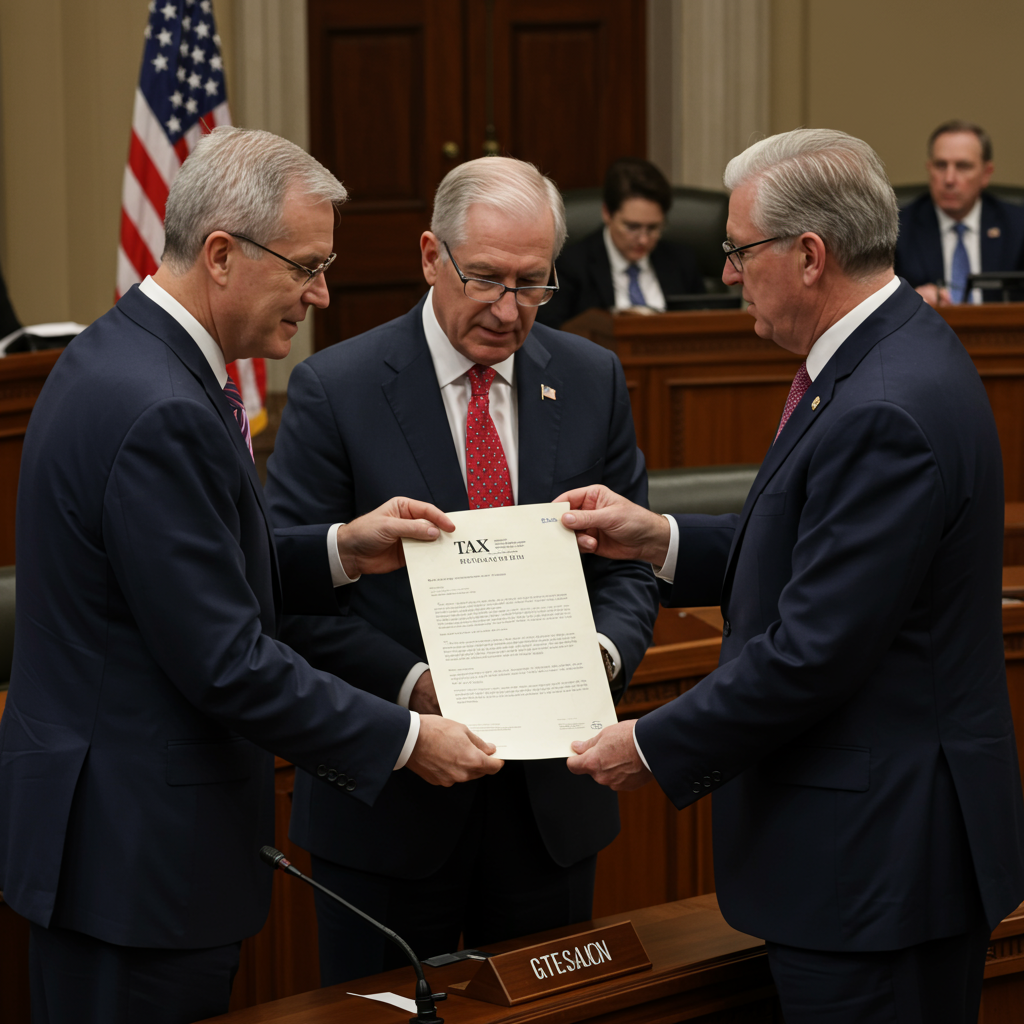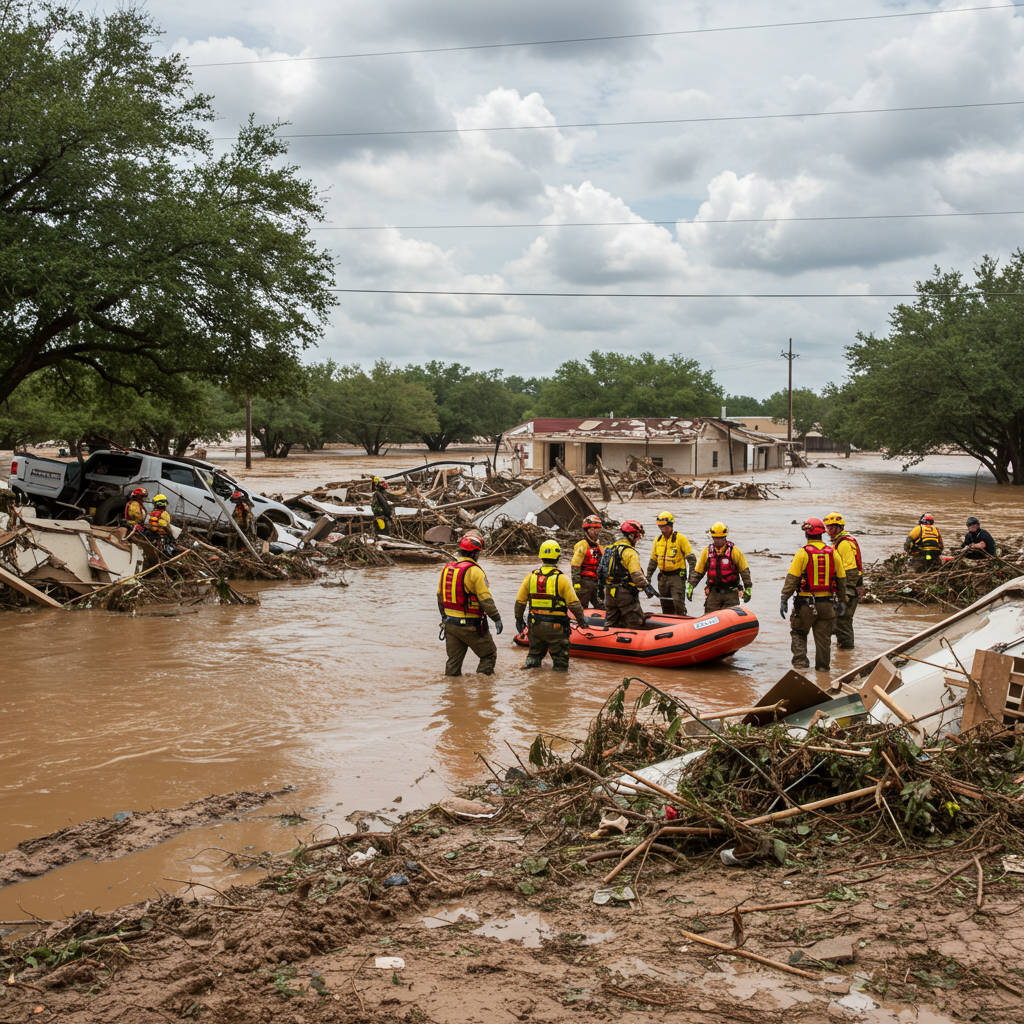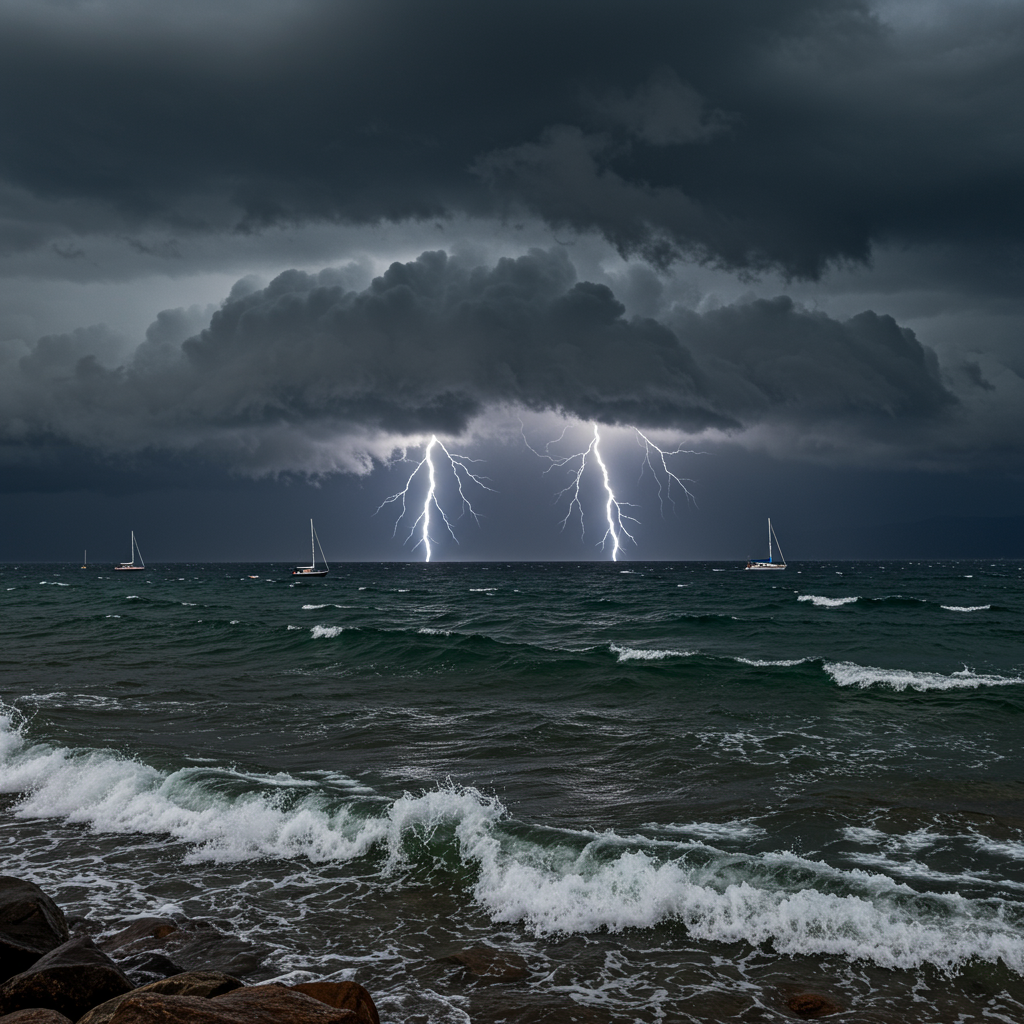A devastating flash flood event ripped through the texas Hill Country, causing widespread destruction and a significant loss of life. Described by officials as a “mass casualty event,” the sudden surge of water along the Guadalupe river basin left communities reeling on Friday, July 4, 2025. Search and rescue teams launched massive operations across central Texas as dozens were reported dead and many more remained missing, including numerous children from a local summer camp. The disaster unfolded with shocking speed, highlighting the volatile nature of the region known as “flash flood alley.”
Scope of the Disaster: Fatalities and Missing Persons
The immediate aftermath of the floods revealed a tragic human toll. Kerr County Sheriff Larry Leitha confirmed at least 24 fatalities by Friday evening. Alongside the confirmed deaths, a significant number of individuals were unaccounted for, prompting intensive search efforts.
A particular focus was placed on Camp Mystic, an all-girls summer camp situated along the Guadalupe River near Hunt, Texas. Officials reported that between 23 and 25 campers were still believed to be missing from the facility. Lieutenant Governor Dan Patrick shared that approximately 750 children were present at Camp Mystic when the floodwaters struck.
The scale of the emergency required extensive evacuations. By Friday night, 237 people had been rescued from the flood-impacted areas. A large portion of these rescues, 167 individuals, were airlifted to safety by helicopter, underscoring the severity and reach of the floodwaters. The sheer number of casualties and missing persons led authorities to label the event a “mass casualty event.”
Unprecedented River Rise: How the Flood Happened
The flash floods were characterized by their extreme speed and intensity, catching many off guard. Lt. Gov. Dan Patrick noted the astonishing rate at which the Guadalupe River rose, stating it increased by roughly 26 feet in a mere 45 minutes. Other reports indicated a rise of over 22 feet in just two hours in Kerrville.
Dalton Rice, the city manager for Kerrville, provided insight into the mechanics of this rapid surge. He explained that the Guadalupe River’s headwaters consist of distinct north and south forks. While these forks typically converge gradually, the unforecasted, heavy rain event settled directly over both, dumping significantly more precipitation than anticipated.
Rice cited a report showing the south fork’s water level skyrocketing from about 7 feet to 29 feet “within a matter of minutes.” This massive volume of water converging into the main Guadalupe River triggered the unprecedented flooding downstream. According to the city of Kerrville, citing the National Weather Service, the Guadalupe River at Hunt reached its second-highest level on record, surpassing the famous 1987 flood height.
Rainfall amounts in the affected areas were substantial, ranging between 5 and 11 inches, or even more in specific pockets. The Texas Division of Emergency Management had conducted preparedness meetings, but officials acknowledged that the National Weather Service’s original forecast, predicting up to 8 inches of rain, significantly underestimated the actual deluge in several counties, including Bandera, Kerr, Tom Green, and Kendall.
Why the Hill Country Floods So Fast
The Texas Hill Country is notoriously susceptible to sudden, severe flooding, earning the nickname “flash flood alley.” This vulnerability stems from the region’s unique geology. A thin layer of soil sits atop hard limestone bedrock. When intense rain falls, the water has nowhere to soak in quickly. Instead, it rapidly runs off the surface and funnels directly into the steep-sided river and creek valleys, causing water levels to rise dramatically in a matter of minutes or hours. This natural characteristic, combined with intense rainfall events like the one on July 4, 2025, creates conditions ripe for catastrophic flash floods.
Extensive Search and Rescue Operations Underway
In response to the disaster, a massive search and rescue effort was immediately launched across the affected areas. Hundreds of personnel from various state and local units were deployed to find missing people and assist those trapped by rising waters. The Texas Department of Public Safety, for example, sent over 100 troopers.
Rescue teams utilized a wide array of resources to navigate the dangerous conditions. These included high-water vehicles capable of traversing flooded roads, various boats for river rescues, and specialized rescue divers. Air support was critical, with numerous drones providing aerial surveillance and seven rescue helicopters equipped with hoist capabilities performing numerous swift-water rescues. Authorities described the entire county as an “extremely active scene” throughout the day Friday.
Personal accounts from survivors highlighted the bravery of responders and the sudden terror of the flood. Some individuals had to be rescued from trees where they had clung for safety. The high number of helicopter rescues underscored the extent to which floodwaters cut off access by road.
Impact on Camp Mystic and Other Areas
The situation at Camp Mystic was particularly concerning given the number of missing children. The all-girls Christian summer camp, located directly on the Guadalupe River, housed approximately 750 campers and staff. A statement issued by the camp and read by Lt. Gov. Patrick described the flooding as reaching a “catastrophic level.”
Conditions at the camp were severe, compounding the challenges for rescue efforts. The facility lost power, water, and Wi-Fi access. Critically, the main highway providing access to Camp Mystic was washed away, hindering immediate aid and limiting options for evacuation and reunification.
While Camp Mystic faced significant challenges, other camps in the vicinity reported better outcomes. Facilities like Camp La Junta and Camp Waldemar were able to confirm that all their campers and staff were safe and accounted for, offering a small measure of relief amid the broader tragedy. The events at Camp Mystic also brought painful reminders of a similar incident in 1987 when campers from another site in the region drowned after their bus was caught in floodwaters.
Official Response and Disaster Declaration
State and federal officials quickly mobilized resources in response to the devastating floods. Texas Governor Greg Abbott signed a disaster declaration for several affected counties during a news conference on Friday night. He stated that this declaration would ensure all counties have access to “limitless” state resources for rescue and recovery efforts.
Both Governor Abbott and Lt. Governor Patrick emphasized the state’s unwavering commitment to finding every missing person and providing full support to the impacted communities. President Donald Trump also commented on the floods, calling them a “terrible thing” and pledging federal aid to support Texas’s response. Senator Ted Cruz echoed this, stating President Trump had committed “ANYTHING Texas needs.”
Officials also issued urgent warnings to the public. They strongly advised individuals who did not live in the affected areas to stay away to avoid interfering with emergency operations and risking their own safety. Residents were urged to heed guidance from state and local officials and monitor local forecasts.
Understanding Warnings and Regional Vulnerability
The speed at which the floodwaters rose left little time for formal warnings or evacuations in some areas. While flood watches had been upgraded, some residents reported not receiving direct emergency alerts on their phones until it was too late. One resident described waking to police knocking but having received no prior alert.
Kerr County Judge Rob Kelly stated that the county lacks a specific automated warning system capable of handling such rapid events. He asserted that “no one knew this kind of flood was coming,” despite the area’s known susceptibility. The Texas Hill Country is widely recognized as “the most dangerous river valley in the United States” for flash flooding due to its geography and climate patterns.
The combination of thin soil, hard bedrock, and intense rainfall makes the region a natural funnel for water. This vulnerability is particularly concerning given the area’s popularity for river recreation, summer camps, and rental properties, bringing many visitors who may be unaware of the inherent risks.
Frequently Asked Questions
What caused the rapid flash flooding in the Texas Hill Country?
The catastrophic floods were caused by sudden, intense, and largely unforecasted heavy rainfall (5-11+ inches) that settled directly over the headwaters of the Guadalupe River. The region’s geography, known as “flash flood alley,” features thin soil over bedrock. This prevents water from soaking in quickly, instead causing it to run off rapidly into river valleys. This combination led the Guadalupe River to rise with extreme speed, increasing by 26 feet in just 45 minutes in some areas.
Which areas and counties were most affected by the Texas Hill Country floods?
The most severe impacts were concentrated within the Texas Hill Country, particularly along the Guadalupe River basin. Counties heavily affected included Kerr County (encompassing towns like Kerrville, Ingram, and Hunt), where the majority of deaths and missing persons were reported, especially around Camp Mystic. Flash flood emergencies were also declared in parts of Bandera, Tom Green, and Kendall counties, indicating significant rainfall and flooding risk in those areas as well.
What safety advice did officials give regarding the flash floods?
Officials issued urgent public safety guidance during the event. They specifically told individuals who do not reside in the affected areas to stay away to ensure emergency responders could access the scene and to prevent others from getting trapped. Texans in the vicinity were advised to closely monitor local forecasts, heed instructions from state and local authorities, and most importantly, never attempt to drive into flooded areas or onto washed-out roads, as water depth and current can be deceptive and life-threatening.
Ongoing Recovery and Community Resilience
The devastating flash floods in the Texas Hill Country represent a profound tragedy for the region. While the immediate focus remains on search and rescue operations and accounting for every missing person, the long road to recovery for impacted communities is just beginning. State and federal resources are being deployed, but the resilience of local residents and the support of surrounding areas will be crucial in rebuilding lives and infrastructure. The event serves as a stark reminder of the power of nature and the unique risks present in this beautiful, yet vulnerable, part of Texas.




